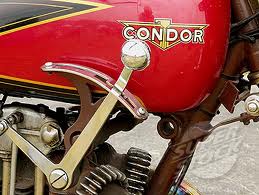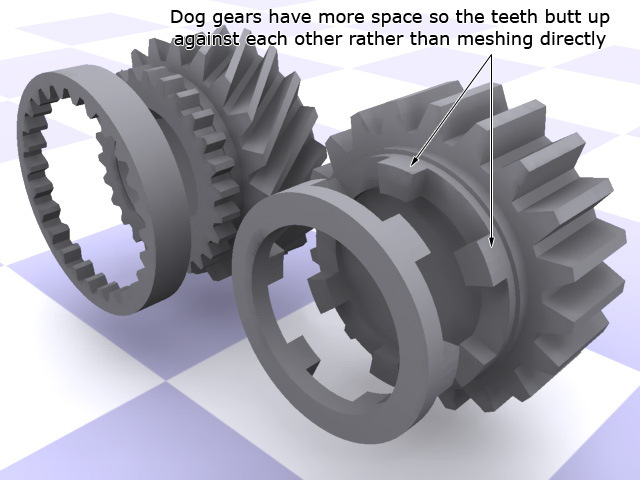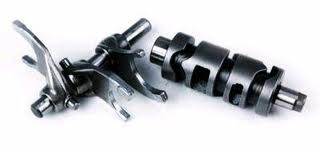
The Gear Lever
You change gear with this, how could it be simpler?
Yeah I know how, clutch, no clutch, how do you know what gear you are in? What gear should I be in? Can I jump a gear? Change down one at a time or a whole bunch?
How does this work?

(For those that really want to know – this is a good article on the Drive Train )
You must be getting tired of this by now but it is important to know how this works. Just the other day I was in a conversation where a guy said “when will bikes get sequential gearboxes like they have in formula 1 cars?” Guy’s we have had them for years!!!!
Knowing how it works will change the way you use it. Its about knowing what you can do and how you should do it.
Ok, so you know a sequential gear box simply means you have to go through the gears in sequence 1;2;3;4;5;6 etc and the same down through the gears and you do this in a switch like manner (gear lever for us) rather than moving a stick through a “pattern”.
They work the same was as other constant mesh gearboxes. Constant mesh means that the actual gears are continually engaged (meshed) with each other and selecting one gear over another is a matter of locking that gear pair to the output shaft via a set of things called “dogs”.


Diagram of gears with Dog and spline change and next to it are the shift forks and Shift drum. The drum is connected to your gear lever and turns, moving the right forks and therefore engaging the correct “dog” to ensure you are in gear.
This works because one gear, usually the input gear (the one that sits on the shaft that inputs power into the gear box) is locked onto its shaft and another is free wheeling on the other shaft, the output shaft.
Also on the shaft are cogs that are locked to the shaft but able to slide sideways and “lock” into the output gears.
The moving of the “dogs” in the correct way to ensure each pair of gears is taken care of is done by a sequence drum. A thing that revolves when you push the lever and moves all the dogs appropriately, one gear position at a time.
All this works because the dogs are firmly rotating with the output shaft (usually) and the gear pairs are freewheeling on the output shaft but firmly rotating with the input shaft. Then when a dog engages with a gear pair by siding sideways into the output gear they lock together and thus a gear is selected.
Now if you consider how gears themselves work the entire next paragraph will start to make sense. Say, just as an example with simple maths, we are running in a gear with a ratio of 1:3 and our next gear has a ratio of 1:2. In the first gear the input shaft will be turning 3X faster than the output shaft so if it is turning at 3000rpm then the output shaft will be turning at 1000rpm.
When you pull in the clutch and disengage the motor from the input shaft the rear wheel will start to drive the output shaft at the same speed (because it is connected to the back wheel via a chain etc).
When you disengage the first gear by moving the dog out from the gear, the first thing that happens as you change gear, the input shaft will start to slow. To engage the next gear, presuming that the output shaft does not slow at all during this time, the input shaft should be spinning at 2000rpm (1:2 and the output shaft is spinning at 1000rpm) to match the speed of the dog with the speed of the gear. So it just has to slow down a little and they will slip together.
This is the way an up
works and you can start to see that simply backing off the throttle momentarily, whilst changing gear will take the pressure off, slip the dog out and start to slide it into the next gear, which will be slowing down to match at the same time. Also in a real gearbox the difference between the gears is much smaller so it all happens very smoothly.
This, BTW, explains why some bikes don’t like clutchless shifts between first and second, too big a gap in the gear ratios.
Changing down is a different matter because the gears need to accelerate to match each other. Or in our example the input shaft would need to go from 2000rpm to 3000rpm to change down between these gears.
Whereas changing up can be done smoothly without the clutch because the following sequence occurs. You back off the throttle slightly whilst pulling up on the gear lever, as soon as the power comes off the dogs disengage and you have a sort of neutral between gears. Then the engine continues to slow down whilst the next gear up is brushed with its dog. Very soon they match speed and slip together, meaning you now have the next gear and you simply apply the throttle again.
Changing down is a lot more difficult because of the fact the input shaft is turning slower than it needs to already and simply backing off the throttle will just make that situation worse, moving the speed between the dog and the output gear further apart.
I have heard idiots telling other more gullible idiots that you can change down clutchlessly and in fact that you should!!!! If you get the way this works you can probably see that if you want to smoothly change down and avoid “gear shock” and potentially a locked back wheel you need to accelerate the input shaft (rev the engine) to match the speed of output shaft before you try to crash the Dog into the output gear.
The only way to do this is using the clutch and throttle to ensure the input shaft has a good chance of matching the right speed for the down change.
Clutchless down changes only work on a bike that has a slipper clutch as instead of the rear wheel locking the slipper clutch, slips and avoids this. It does not however avoid the gear shock or abuse you put the motor through and will wear our half your clutch really quickly!!!. Clutchless downshifts are not what you want to be doing.
How do I shift down?
Ok, so I have already mentioned that you need to synchronise the engine revs and therefore the gears for the next lower gear with the speed of the output shaft of the gearbox. Sound complicated? It does doesn’t it.
Ok, so more simply you need to get the engine speed to match the next gear as part of your downshift!!
Now you could simply do this and don’t laugh many riders do this.
- Pull in the clutch and shut the throttle
- Change down (yep you’ll get a clunk… anyone know why)
- Open the throttle whilst you let the clutch out, just the same as you do to take off, but now at speed to stop the back wheel from locking with the engine braking.
Or you could try and use the engines natural desire to slow down very very quickly once you close the throttle to do the following.
- Close the throttle and pull in the clutch.
- Change gear and at the same time Rev the engine with the clutch pulled in (Note even though the clutch is pulled in because of oil drag and the fact that there is nothing trying to stop it, the gear input shaft will accelerate as well)
- Let the clutch out (At this point the input shaft will have slowed down and engaged and the engine won’t be far behind )
- The engine will slow down quickly to match the new gear (If you do it really badly you will get a small acceleration then smooth engine braking, if you do it even in the ball park that you should be in you’ll get smooth deceleration only).
The first one of these will take an enormous amount of concentration and skill and there is no way you’ll be able to shift down rapidly approaching a corner, the second will become totally natural and will allow you to stamp your way down four gears rapidly under brakes and still get that smooth progressive deceleration without rear wheel lock up.
It does take a little practice but it is not so much a difficult skill as simply having the sequence snap into place in your mind. Once you get it you’ll wonder why it took so long to learn, its like a switch and very soon it will become completely automatic even at a very rapid rate.
Practice, Practice, Practice. The only way to really learn this and get it automatic is to practice and the best practice is the following; riding at a constant pace change up and down trying not to change speed at all or even upset the bike slightly. If done well you should only hear the engine speed go up and down and feel nothing at all through the bike. Once you can do this, you can down change like a pro!!!
This exercise has the advantage of taking the braking out of the equation and therefore allowing you to concentrate on what’s important. You should be able to downshift, using the clutch like a switch, no thought about getting a slow controlled engagement, just bang bang bang down the gears and a smooth deceleration “set” on the bike.
How do I shift up?
On a modern bike you don’t really need the clutch to shift up once you are moving. Don’t get me wrong you might like to use it for smoothness or for shifts like first to second, but you don’t need it unless you are at very slow speeds in which case you should be using it!!! (I’m talking walking or jogging speeds here).
I personally shift differently depending on the bike I am riding. Some bikes, like my BMW, don’t like clutchless shifts and so I use the clutch just to allow a little slip not fully pulling it in. Most bikes however will shift smoother without the clutch. Feel your bike and get what works for it.
The art of the upshift is the same no matter if you use the clutch or not. It goes like this;
- Place foot under gear lever and with power still on pull gently up on the lever (pull as hard as the bike will allow you to with out pulling it out of gear – NOTE: continuing to have power on is important).
- Roll off the throttle enough to allow the drive to come off the gearbox. (NOTE: if you want to use the clutch dip it now, you don’t need a full pull just a little slip)
- The gear lever will slide up into the next gear
- Roll on the throttle again (and let out the clutch if you did use it).
And your done. The power will have come off only momentarily and hopefully you will have barely affected the “Set” of the bike at all.
Now guess what… the perfect way to practice this is the same constant speed change down, change up exercise I spoke of before.
How do I know I’m in the right gear?
If you remember from the chapter on throttle you’ll know that your engine is all about potential power and you should ride it according to how much potential you need at any particular time.
High in the torque range for the track and lower in the torque range for a trip to the shops.
The right gear is the gear that allows you to be there…. end of story. Well almost.
The above is the rule but we all know that there are exceptions to the rule. But if you start with the above you’ll be mostly on your way and all you will have to worry about is when you have no more gears available to go up or down.
How to tell if you are at the top or bottom
Most gearboxes change once they have got to the top gear or bottom gear for that matter. My Streetfighter will have a solid lever until it has reached the end of the gears and then the lever will just move up (or down) without anything happening. So I can tell, by putting my foot under the lever and pulling up, if I have reached top gear. If I have it will just move up even though I have not yet backed off the throttle, but if I haven’t it will not move up until I actually change gear.
Likewise my BMW has a slight movement when there is another gear left before it changes gear. But when there is no gear left it is just solid.
So you learn to feel for the top and bottom. You also learn to count your gears, because some bikes just don’t let you know that there are none left!!!. Trust me after you have tried for a gear and found you already are there a few dozen times, you’ll just get to know you’ve reached top!!!
Breaking the rules.
So when should you break the rules. Well sometimes the way an engine works or the situation you can and do break the rules.. Dirt bikes down shift sometimes without the clutch, if you have a power shifter like some modern sports bikes, you can pretty much ignore the clutch. Finding grip sometimes means finding less instant torque and loading up the motor in a higher gear etc. The rules are a safe place to start, from there its about learning and understanding how you can get things to work.



